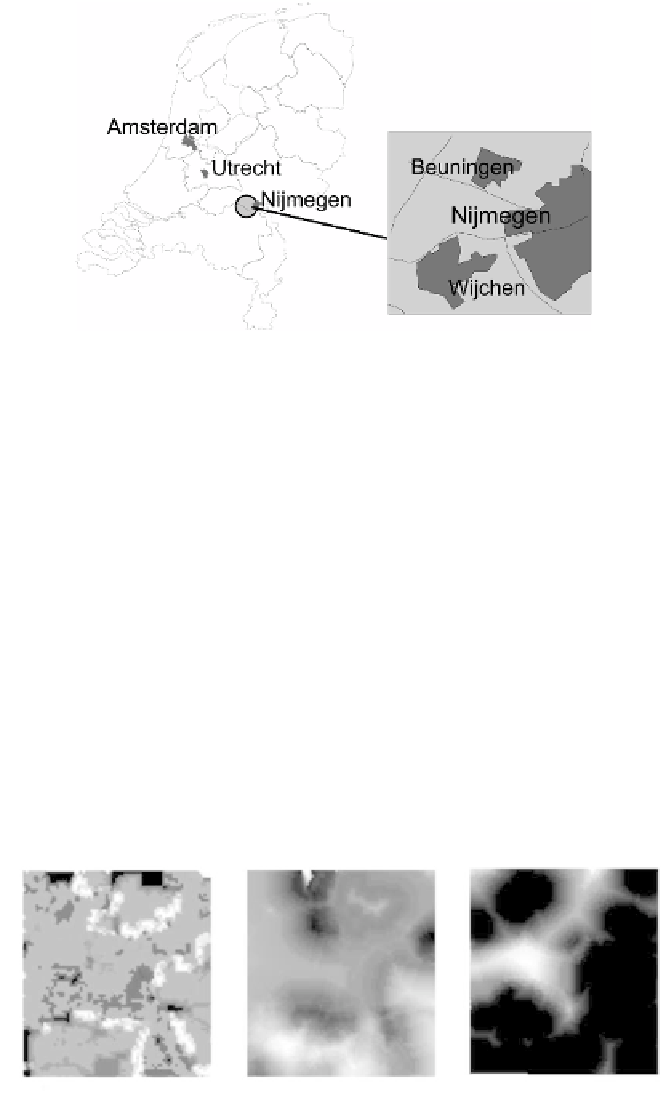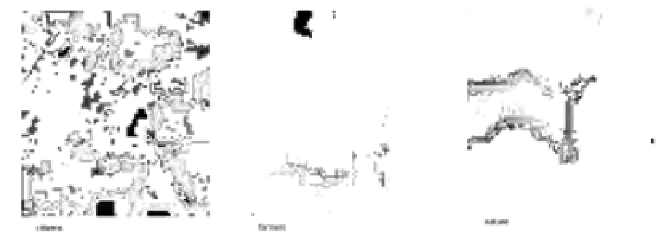Information Technology Reference
In-Depth Information
Fig. 3.
Study area, the “Land van Maas and Waal”
“nature conservationist”, “farmers”, and “citizens representatives”. Each agent
has a number of desires which were implemented as spatial rules in the ABM
(see for a detail description of how these rules are implemented [20, 21]). The
rules for each agent are formulated hypothetically based on archetypical desires
for each type of actor. Based on the rules each agent generated an explicit spatial
representation of its opinion for realizing new urban areas in the study area. Of
each actor type 15 agents were instantiated each having slightly different opin-
ions accounting for the within group differences. These different opinions where
accomplished by multiplying the initial opinions of each cell with a stochastic
disturbance term :
log r
)
α
v
=(
−
1
∗
(14)
Where
v
= the random perturbation and
r
[0
,
1] is a random number, and
α
is a parameter to scale the pertubation and is given for this study a value of
0
.
1. Figure 4 shows the initial mean opinions for each actor group. These initial
Fig. 4.
Initial mean opinions of the citizens, farmers, and nature conservationists. The
lighter the colors the more positive the opinions.



